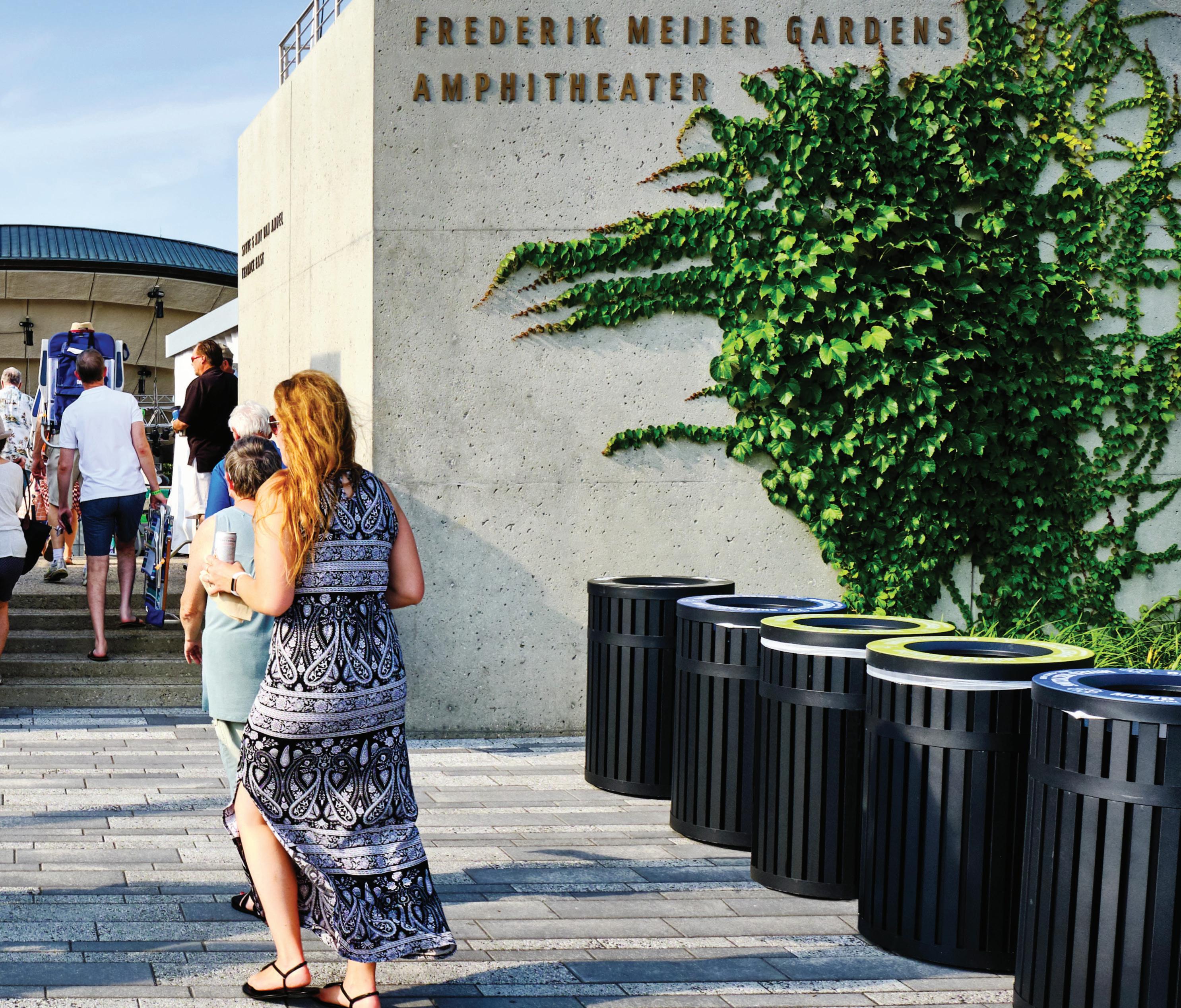
2 minute read
Growing as a Good Steward
As our campus continues to change, grow and take new shapes, we keep a constant eye on environmental stewardship. From horticulture to sculpture, hospitality to facilities, we diligently seek new and novel ways to raise our sustainability performance.
Frederik Meijer Gardens & Sculpture Park is intimately intertwined with the natural world. As environmental stewards, we respect the beauty of our diverse environment by nurturing its health, preserving its integrity and protecting its legacy for generations to enjoy.
Advertisement
Two years ago, we created an internal Waste Reduction Task Force to reduce landfill waste. Improvements to date include more intentional recycling efforts, most notably the recovery of recyclable cans and bottles from our popular Fifth Third Bank Summer Concerts at Meijer Gardens. Last year, we stationed cardboard bins throughout the Frederik Meijer Gardens Amphitheater. This past season, we upgraded to permanent metal cans marked for trash, recycling and deposit returns. To increase efficiency and accuracy, we staffed these stations with volunteers to help patrons sort recyclables and, ultimately, decrease recycling contamination.
When we construct new facilities, they are all built to be LEED (Leadership in Energy and Environmental Design) certified. We partner with companies who share our environmental passion and, whenever possible, source and transport building materials in the United States to lower our carbon footprint.

Our upgraded, permanent metal cans marked for trash, recycling and deposit returns located outside the Frederik Meijer Gardens Amphitheater.
Photo by Kevin Huver.
The new concessions building also includes a can crusher, with recycling picked up three times a week. Deposit items are returned, with money serving our General Operations Fund. As of September, we had already collected 35,000 recyclables—more than doubling the total from the 2018 concert season. Back of house areas like catering, break rooms and volunteer stations also sort recyclables. The James & Shirley Balk Café has switched to sustainable containers and paper straws, and the task force is investigating the future viability of composting.
We also recycle rainwater and runoff across our 158 acres. Rather than allow water to run straight into the storm sewer system, we engineer creative ways to slow it down so it can be repurposed in our wetlands or gardens to nourish plant material and wildlife. Water retention areas in our rain gardens are planted with perennials that can handle periodic flooding, and we use the water from our ponds for irrigation.
These same sustainability principles played a large part in the design of the Stuart and Barbara Padnos Rooftop Sculpture Garden. Where structures with flat roofs typically have a rubber membrane that allows water to drain into a storm sewer system, our innovative rooftop garden acts like a sponge. Initial rainfall gets absorbed by roots and plant material, with any excess water filtering through the soil, then traveling down a drain and eventually returning to the lawn and wetlands. It’s a sustainable system that captures the majority of rooftop precipitation; it takes an immense rainfall to overwhelm it. Even the hard surfaces follow suit. Pavers sit on a floating grid that allows water to flow through and run underneath to irrigate planting beds.
Environmental stewardship is a responsibility we embrace at Meijer Gardens. As you watch us grow, know that sustainability and conservation are at the heart of every conversation and decision we make. See our efforts take shape at MeijerGardens.org/growing.








